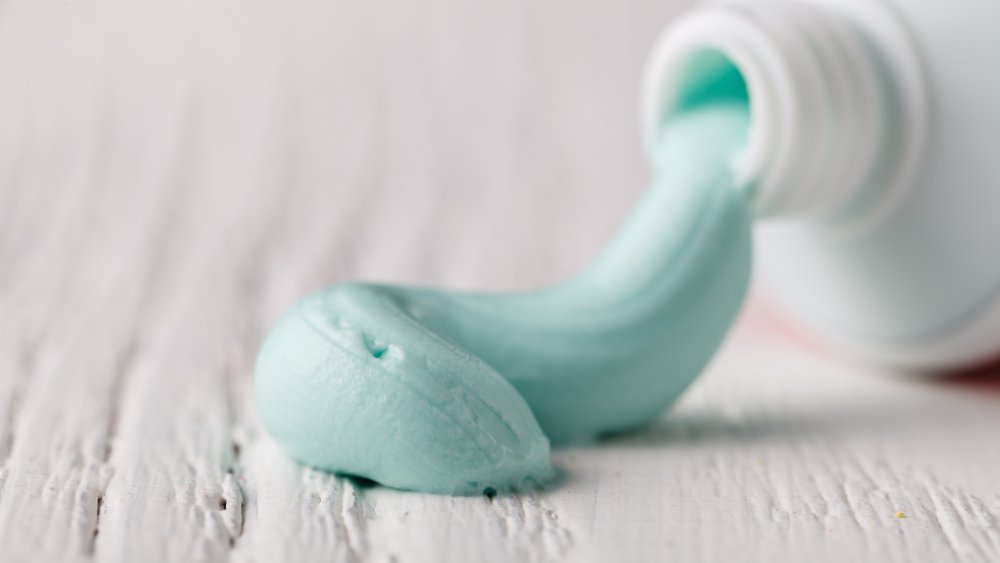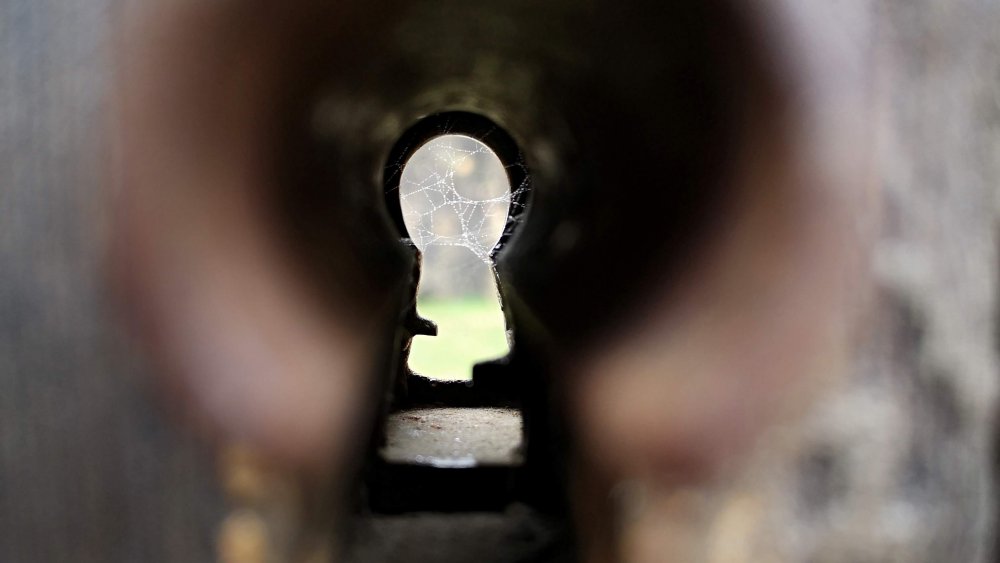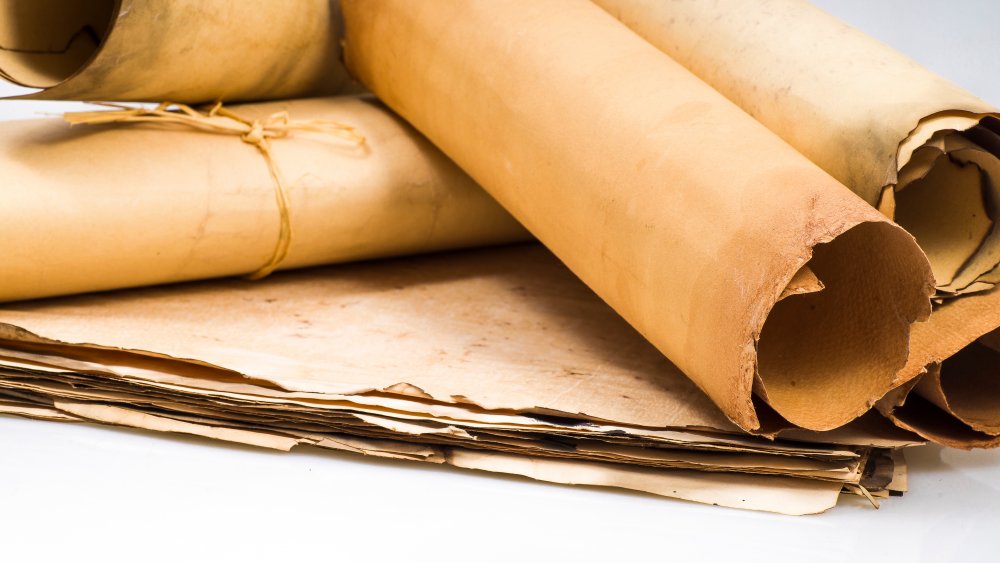Ancient Inventions You Didn't Realize We Still Use Today
Every new decade brings a wave of inventions that change everything. The craziness never stops. Every time that you finally get used to all the funky new technology coming out, it all goes out of date, and is replaced by even funkier stuff. Seriously, it wasn't that long ago where people were marveling over cordless phones, and these days, your phone has also become a dictionary, a recipe book, a weather predicting service, and a video camera, all in one. Slow down, world!
What you might not realize in the midst of this flurry, though, is that some of the tools and contraptions you have used every day, for most of your life, have been around longer than your great-great-great-grandparents. No, really. The ancients had some ideas so perfect, so ridiculously awesome, that even now, all these centuries (or millennia!) later, nobody has thought of a better way to do it.
Thank the ancient Egyptians for your fresh breath (and lack of cavities)
Considering the amount of time and money human beings spend on dental care, it's funny to consider no other animals brush, floss, and mouthwash their teeth the way we do. Now, this shouldn't be taken as an invitation to stop brushing. Dear god, don't do that. Rather, it's a sign whoever first came up with the crazy brilliant idea of toothpaste did a bang-up job. As it happens, toothpaste has been around since the days of ancient Egypt, according to HowStuffWorks, and while those guys weren't chewing processed sugars, they did have to deal with sand and grit getting into their bread dough. Not good for tooth enamel!
Colgate says the Egyptians were rubbing in toothpaste (with their fingers, the toothbrush came later) all the way back in 5000 BCE, but obviously, the stuff in their mouths wasn't full of fluoride, novamin, and/or xylitol: one example of an Egyptian toothpaste recipe from the fourth century, according to the Telegraph, contained crushed rock salt, a whole lot of pepper, dried iris flower, and mint. Hey, at least the last part stuck around, right? One modern Austrian dentist who tried it out claimed it made his gums bleed (ouch), but did the job quite effectively ... you know, if you don't mind blood. Regardless, it's pretty amazing the concept for toothpaste has been around for as long as the pyramids, even if the various recipes for it have been refined quite a bit.
Locks have been around for a long, long time
Every time you leave the house at night and lock your door behind you, sliding a little key into a little hole, spare a quiet moment of appreciation for the good ol' Mesopotamians, who figured out this door locking business way back at the start of human civilization, according to D.T. Potts.
Evidence for locking mechanisms have been found in what is now Iraq, as Gizmodo describes, dating back to 4000 BCE. These Mesopotamian pin locks were made of old-school wood, rather than metal, but otherwise functioned in a way that is remarkably similar to today's versions. This design went on to be refined by the Egyptians, using brass pins, and then adopted by Greece, whereupon it eventually spread to the Roman Empire. Metal locks became widespread during the Medieval era, when things like the plague (or dragons) were serious concerns, and the overall design hasn't changed that much in the centuries since. Now, these days, electric locks are becoming increasingly common, but it's hard to imagine that the classic analog design will ever fully die out.
The Chinese invention of paper proved to be a huge game changer
Imagine a world without paper. Sure, e-readers are great today, but if people had still been banging letters into stones a few hundred years ago, would humanity have ever reached its present-day heights? Just writing a single book would've taken a lifetime.
The credit for inventing paper goes to China. According to the Ancient History Encyclopedia, the Chinese were experimenting with paper materials made from hemp around the 2nd century BCE, perhaps as an accident resulting from hemp-based clothes behind left out too long after washing. A few centuries later, more refined paper was created by a notable inventor named Cai Lun, who soaked and pressed plant fibers until the hot, long, dry sheets became ridiculously perfect to write upon. This eventually evolved into those once-trendy paper scrolls, then paper money, paper decorations, and so on. The Chinese experimented with different paper styles, materials, and colors for centuries, but they tried to keep this miraculous stuff hidden from Europe and the Middle East for a long time. Eventually, though, those snooping Westerners caught on, stole the great paper recipe sometime around the eighth century CE, and the world has never looked back.
These days, of course, hemp — and thus, old fashioned hemp paper — is making something of a comeback.
Gotta love that Roman plumbing (unless it makes you sick)
The genius who first invented the idea of plumbing deserves a gold star in the history book, that's for sure. Ancient Rome was a society that enjoyed the luxury of half-decent toilets, according to Science Magazine, through a complex series of aqueducts that, perhaps, might date as far back as 200 BCE. Impressive? Oh yeah. Especially when you stop to consider how much worse the whole thing got when the Middle Ages came around.
Unfortunately, while Rome's plumbing system was an architectural marvel, and it certainly inspired the watery wonders everyone enjoys today, the historical record does show that it had some defects. For one, lead pipes probably led to lead poisoning, which is a serious issue (one which continues to be a problem today, as residents of Flint, Michigan can attest to). Furthermore, the Atlantic points out that while Rome's toilets, sewers, baths, and so on might've been built with the intention of cutting down on diseases, the evidence has shown that they didn't really do a lot for the public health ... at least, not by contemporary standards, unless you consider widespread whipworm, dysentery, lice, and bedbugs to be a "minor" concern. Yikes.
Nonetheless, while Roman plumbing seems gross today, the toilet in your bathroom (and the bum that sits upon it) still owes that ancient empire a debt of gratitude.
Even the ancients loved to get drunk
If you were to set your time machine on "random," just to see what time period or location you popped up in, there would be one solid comfort you could count on: someone, somewhere in the world, would be getting trashed. Bottom's up, humanity! Looking back, though, which culture got the ball rolling on this whole alcohol thing? Lest you get all stereotypical and blame the Irish, you should know that the oldest evidence of alcohol consumption goes back to China, according to NBC News. 9,000 years ago, those folks were drinking an early wine made from honey, rice, and fruit, and while that does sound like a killer hangover, the art of alcohol production was still young.
It's unclear who first figured out that imbibing fermented fruits results in a wild and dizzy reaction, or realized it wasn't going to kill you, but at some point everybody got on board, and the world has never been the same. In Iran, for instance, there is evidence of grape-based wine as far back as 5,400 BCE. As for beer, History says that it also goes back to the Middle East, where the Sumerians were partying with booze — and even worshiping a goddess of beer, named Ninkasi — some 5,000 years ago.
So yeah, booze and humanity go together like peanut butter and jelly, and that will probably continue to be the case for the foreseeable future. No wonder that whole "Prohibition" thing didn't work out.
The vending machine, invented by one really heroic (and really ancient) dude
Want to guess when the steam engine was invented? 2,000 years ago, actually, by a Greek guy named Hero of Alexandria (or Heron, as he's often credited). This deeply heroic dude's invention, the aeolipile, cracked a code that wouldn't be cracked again until the 1800s, according to Kotaku. As if that wasn't impressive enough, Hero's brilliance was so ahead of his time that he also invented wind-powered technology, automated "robot" devices, mathematical concepts like Hero's formula and Fermat's principle, and authored a number of significant geometry books, according to Encyclopedia Britannica. Basically, this guy was the Shuri of 62 CE ... except, you know, he was real.
One of the more amusing things that Hero invented, bizarrely enough, was the vending machine. Hero's version didn't spit out soda cans or candy bars like the one in your break room, of course: instead, it dispensed holy water. Just like today's vending machines, though, it was operated by coins. While a crunchy granola bar is, admittedly, more exciting than a gush of water, you have to give this machine major props for getting the whole thing started ... and, most likely, never having items get stuck in it.
Bet you can't guess when the first newspaper was published
Believe it or not, the commoners of the Roman Empire liked to be informed, just as much as you do. Thankfully, they had their own "newspaper" to keep them abreast of the latest updates: this daily gazette, known as Acta diurna, paved the way for every newspaper that followed. Acta, which is Latin for "things that have been done," was split into two ancient imprints. Of the two, Acta diurna was a public journal that covered the various social events, obituaries, human interest stories, and sports updates (you know, gladiators), while its sister publication, Actua senatus, recorded the minutes taken from senate meetings, and was only available to politicians (or could be read at the library, if you had special permission).
Acta diurna was handwritten, according to the New York Times, posted up in public locations, available for purchase from the scribes, and for nearly 300 years, published on a daily basis. In contrast, the New York Times hasn't even hit its 200th anniversary. Now that's longevity! That said, while Acta diurna was the first newspaper, it wasn't printed on paper at all, but rather, the stories were inscribed upon metal or stone, according to History.
The Aztecs had their own hot cocoa beverages
Chocolate has been enjoyed by humans for a long, long time, but the solid chocolate bars you see today are a relatively contemporary invention. Hot chocolate drinks, on the other hand? Those go waaaaay back, though they weren't always quite so sugary.
First off, for those in the back shouting "chocolate is a plant!," it's important to define some terms: the beans are actually called cacao, while "chocolate" is any food/drink product made from the aforementioned cacao beans. Got it? Now, chocolate was strictly a hot beverage for the vast majority of its history, according to the Smithsonian, and the word chocolate itself is derived from the Aztec "xocoatl," which was the name for the particular hot beverage they enjoyed making. Aztec xocoatl was bitter, rather than sweet, but otherwise quite similar to what you drink today. Both the Aztecs and Mayans believed that chocolate possessed divine properties, and it's possible that chocolate consumption in Latin America might go back three or four millennia. Not surprising, considering that people continue to be obsessed with it, to this day.
Cosmetics were just as important back then as they are now
The fact that people love to decorate their face with makeup, lipstick, eyeliner, and so on isn't a contemporary phenomenon. According to CNN, ancient Egypt was a place where makeup was a huge part of life. No matter what your gender, class, or background, makeup was accepted and encouraged, and much of it resembled the same products you would use today.
Red lipstick, for example, was something that Cleopatra loved applying in front of her mirror, though hers was made from crushed beetles. Special eye paints could be crafted from materials such as crushed glass and gold, though eye shadow often contained animal fat or vegetable oil. Eye liner, meanwhile, was made from "kohl" — a combination of various metals, almonds, and diamonds — which, according to HowStuffWorks, was applied freely by both women and men for the purpose of deflecting sunlight, guarding against malevolent spirits, and (perhaps accidentally) protecting people from infections. In the centuries afterward, makeup usage spread to the Romans and Greeks, and while the art form suffered a decline during the Middle Ages, it has since become one of the biggest industries on the planet.
Concrete existed before the Romans
Now, to be fair, the Roman Empire deserves a lot of credit for concrete, since they were the ones who perfected the recipe of this cold, hard, gray stuff like no one else. Contrary to popular opinion, though, the Romans weren't the first ones to invent it. As Harvinder Singh writes, concrete structures dating back to 6,500 BCE have been found in the Middle East — present-day Syria and Jordan, to be precise — which were constructed by the Nabataeans, an Arab people of the desert. Some 3,000 years later, Giatec Scientific reports that the Egyptians and Chinese were both creeping toward cement, as well.
Following that, of course, the Romans came in and knocked it out of the park, using a mixture of lime, seawater, and volcanic ash to create some of the most powerful structures in Earth history. In the Middle Ages, sadly, concrete technology pretty much dropped off the radar, before being reinvented in the 1700s. Funny thing about that ol' Roman concrete, though: it was actually better (and more eco-friendly) than contemporary mixes, according to Time Magazine, as demonstrated by the fact that ancient Roman structures are still standing tall today, 2000 years later. In contrast, the integrity of more recent 20th century buildings is ... well, lacking, to put it mildly.
Umbrellas have always been a fashionable accessory, no matter your time in history
Umbrellas were around a long time before Rihanna, Mary Poppins, the Penguin, or even James Smith and Sons, according to ThoughtCo. In fact, umbrellas have been flopping around and protecting people's heads for over 4,000 years.
Most likely, it was the Egyptians who first got the ball rolling, depending on how strictly you define the term "umbrella." They were the ones who designed the first parasols used to protect people from the sun, as Umbrella History points out, though these devices were made from palm leaves attached to a stick. Eventually, such parasols evolved into a symbol of Egyptian royalty. It's worth noting, though, that the Egyptians never bothered to waterproof their umbrellas: that particular innovation came from the Chinese, whom in the eleventh century BCE started waxing and lacquering their parasols, according to TheInventors.org. In China, like Egypt, umbrellas became a symbol of nobility, with the emperor in particular using a fancy four-tiered version.
Now, at some point in the first millennium BCE, umbrellas spread to Greece and Rome ... but only for women. Yes, really. Because, you know, nothing is more super-macho than denying an umbrella so you can appear at your next business meeting soaking wet, right? This rather dumb trend somehow carried on until the 1700s, when an English traveler named Jonas Hanway made it "okay" for men to carry umbrellas, too.
Democracy goes way back
If you were to look at the history book and conclude that most of it is filled with brutal authoritarian regimes, wherein horrible egomaniacs ruthlessly abuse the rights of thousands of subjects ... well, yeah, unfortunately, that's not a lie. Class divisions, and those who exploit them, have always existed, with today's billion-dollar corporations simply being the natural evolution of feudal lords.
However, there are some bright spots in history, such as the fact that the ancient Greeks came up with this amazing idea called "democracy" thousands of years before the Founding Fathers of the United States made it cool. History points out that the word democracy, in fact, stems from the Greek demokratia, or "rule by the people." Introduced by a guy called Cleisthenes of Athens in the year 507 BCE, demokratia was the world's first recorded and first successful democracy, formed of three separate governing bodies of representatives. This system worked pretty well for approximately 200 years. Now, it certainly had some flaws — for example, only male Athenian citizens aged 18 or above could vote, excluding women, residents whose parents hadn't been born in Athens, and slaves — and the whole thing eventually devolved into an aristocracy (sigh), there's no doubting that this innovative Greek invention went on to change the world, by paving the way for so many of today's political systems. Good stuff, Cleisthenes.












